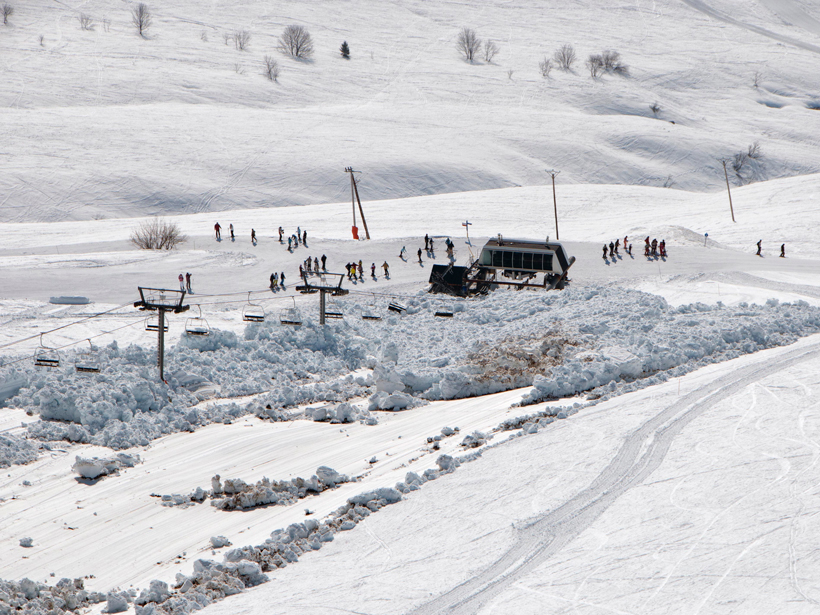Source: Reviews of Geophysics
Avalanches pose a dramatic threat to human lives and infrastructure in snowy regions around the world. Rising global temperatures have increased the frequency and impact of gravity-driven flows, in which mechanical failures trigger snow avalanches and debris flows. A type of wet-snow avalanche known as glide avalanches has caused increasing damage as well, but scientists still struggle to understand the precise physics behind these hazards.
When meltwater is under pressure from the snowpack above and warmed by the ground below, it acts as a lubricant, which causes a large solid mass of wet snow to glide slowly down a slope. These avalanches are most common on fairly steep slopes with a smooth surface like grass or bare rock. Adjacent areas of snow glide at different speeds, generating stress within the snowpack. Once the stress reaches a critical level, the snowpack can crack all the way through, cascading snow down the slope. Glide avalanches can cause serious damage to infrastructure, such as chair lift towers, and calculating their potential impact is vital to better protecting mountain communities.
One such glide avalanche occurred on 2 March 2012 at the St. François Longchamps resort in France (see video). Seventy skiers were riding the chairlift when it was hit, but they were evacuated unharmed. This was the first avalanche to hit this 28-year-old chairlift, which was damaged again by a 2015 glide avalanche.


Using mathematical models and laboratory simulations, Ancey and Bain reviewed the physics of glide avalanches and the forces they exert on simple structures such as chair lift towers. They also used two case studies of glide avalanche damage to chair lift towers to back calculate the forces involved. Although the precise physical mechanisms behind glide avalanches remain elusive, when the snow depth and density are known, the force exerted on simple structures can be calculated. The team also reports that gliding snowpacks can produce the same force as high-speed flows.
The studies the authors reviewed also differ in predictions of wet-snow avalanche frequency in response to global climate change. Field surveys show considerable variability in the nature of avalanche activity in recent decades, and the researchers reported no clear correlation between global warming and the frequency of wet-snow avalanches. Despite this ambiguity, the study is an important step toward a better scientific understanding of avalanche physics and prediction, vital to cold climate regions where communities and economies rely on snow safety. (Reviews of Geophysics, doi:10.1002/2015RG000491, 2015)
—Nancy McGuire, Freelance Writer
Citation: McGuire, N. (2015), Slow-moving glide avalanches still pack a punch, Eos, 96, doi:10.1029/2015EO039737. Published on 20 November 2015.
Text © 2015. The authors. CC BY-NC 3.0
Except where otherwise noted, images are subject to copyright. Any reuse without express permission from the copyright owner is prohibited.

